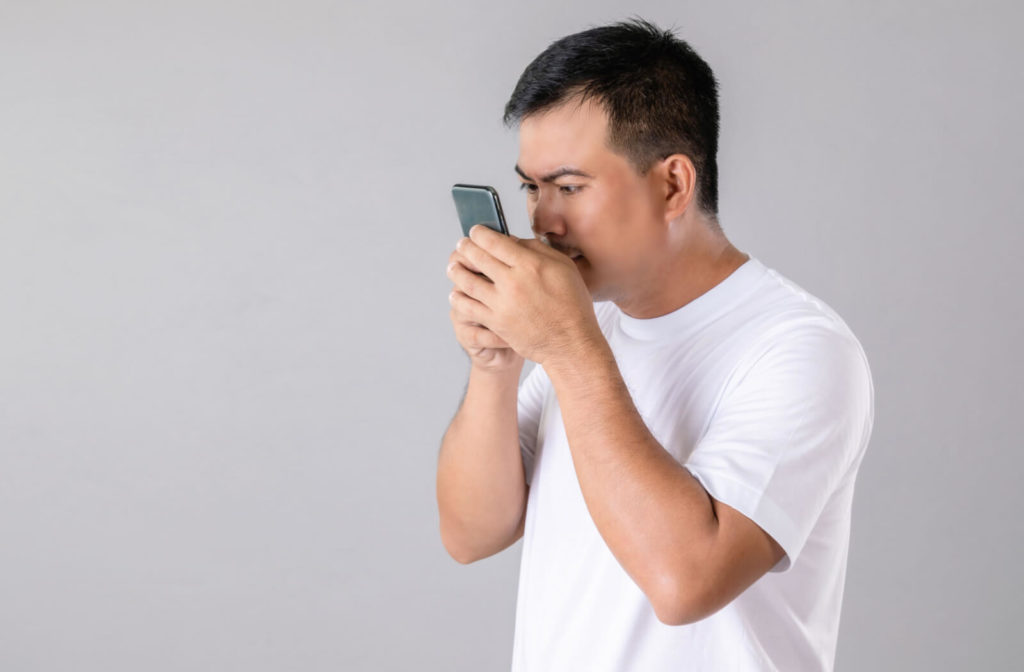Many people have heard of myopia. It’s a common eye condition among children and affects many adults as well. But what do you know about high myopia?
While mild cases of myopia can cause blurred distance vision, severe cases of the condition can lead to more serious outcomes. Severe myopia, also known as high myopia, can increase your risk of developing potentially vision-threatening conditions such as glaucoma, cataracts, and retinal detachment.
Defining High Myopia
High myopia can simply be defined as a severe form of myopia. Myopia, commonly known as nearsightedness, is a refractive error that impacts your ability to see distant objects clearly.
Myopia most often develops during childhood and can continue to get worse until vision stabilizes between the age of 20–30. The condition often first occurs when a child’s eyes grow elongated, which can impact their ability to focus on distant objects, causing blurred vision. Without proper diagnosis and intervention, eyes can continue to grow longer, resulting in worsening myopia.
In high myopia, the degree of nearsightedness is significantly more severe than in mild myopia. Mild myopia, also known as common myopia, is defined as a refractive error below -5 or -6 diopters, and high myopia is typically characterized by a refractive error greater than -5 diopters.
Causes of High Myopia
The exact cause of high myopia is not yet fully understood, but it is believed to be caused by a combination of genetic and environmental factors.
Environmental factors such as excessive near work, prolonged use of digital devices, and a lack of outdoor activity during childhood may also contribute to the continued progression of myopia and development of high myopia.
Additionally, certain medical conditions are associated with an increased risk of high myopia, such as connective tissue disorders like Marfan syndrome and Ehlers-Danlos syndrome.
Diagnosing High Myopia
Myopia, including high myopia, can often be diagnosed through a routine eye exam. Because myopia most often develops in school-age children, yearly eye exams are particularly important during these key developmental years.
During an eye exam, we can conduct a complete evaluation of your child’s vision and eye health. Refractive errors, including myopia, can be identified through a visual acuity test and other tests that are a standard part of a comprehensive eye exam.
Risks & Complications of High Myopia
High myopia poses several risks and potential complications that go beyond blurred vision. If left untreated, myopia often continues worsening as eyes become more elongated. This can lead to thinning of the retina and other structural changes to the eye. These changes can increase a person’s risk of developing various eye conditions, including:
- Retinal detachment: The thinning and stretching of the retina can make it more vulnerable to detaching from the underlying tissue, which can lead to partial or total vision loss if not promptly treated.
- Glaucoma: Individuals with high myopia have a higher risk of developing glaucoma, a group of conditions characterized by optic nerve damage and vision loss, often as a result of increased intraocular pressure.
- Cataracts: High myopia is associated with an increased risk of cataracts, a clouding of the eye’s natural lens that can lead to blurry vision and vision loss.
- Macular degeneration: High myopia may increase your risk of developing myopic macular degeneration (maculopathy), a progressive eye disease that affects your central vision and can lead to permanent vision loss.
Treating High Myopia
Unfortunately, high myopia cannot be cured or reversed. However, there are a few treatment options that may aid in preventing further vision loss and other high myopia-related complications, including:
- Prescription eyeglasses or contact lenses: While vision loss caused by high myopia cannot be reversed, it may be corrected using prescription eyeglasses or contact lenses. However, in advanced cases of myopia, corrective lenses may no longer be able to provide sufficient vision correction.
- Laser eye surgery: Some individuals may benefit from specialized laser treatment to prevent some of the potentially vision-threatening complications of high myopia.
Preventing High Myopia
High myopia can develop as a result of unmanaged myopia, so prevention is grounded in treating myopia when it first develops. Working with your eye doctor to create a myopia control plan can help prevent serious complications for you or your child.
An effective myopia control plan may include a variety of treatments, such as:
- Ortho-k: Orthokeratology (ortho-k) treatments involve using custom-fit contact lenses to gently reshape your child’s cornea while they sleep. This can provide your child with clear vision the following day and slow the progression of myopia. Ortho-k treatments have been clinically shown to be effective in slowing myopia progression for children.
- Low-dose atropine drops: Atropine drops are commonly used to dilate your eyes during an eye exam. However, treatment with low-dose atropine eye drops has also been shown to be effective for slowing myopia progression.
- Specialty eyeglasses and contact lenses: An eye doctor may also prescribe other specialty eyeglasses or contact lenses to slow myopia progression, such as multifocal contact lenses or peripheral defocus lenses.
Making Children’s Eye Care a Priority
Ultimately, preventing high myopia and its associated complications starts with treating myopia as it first develops. Making your child’s eye care a priority can help support healthy vision that lasts a lifetime.
Our team at Dr. Taylor Bladh, O.D. is here to support your family’s eye care needs, including children’s eye exams and myopia control treatment. Contact our office to schedule an appointment.



